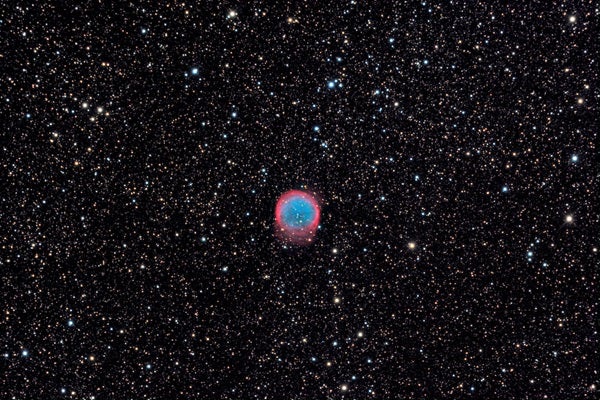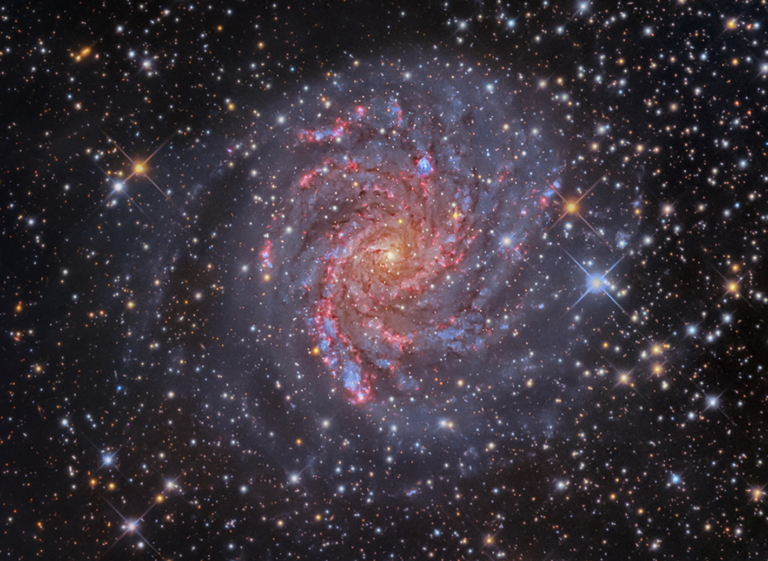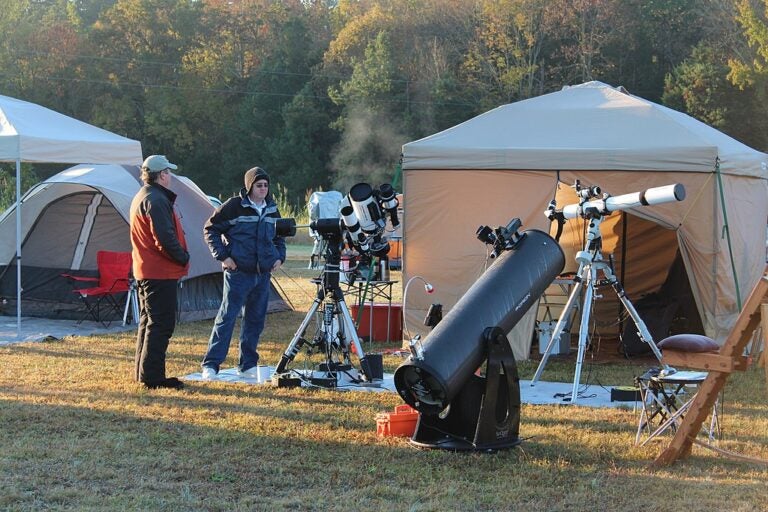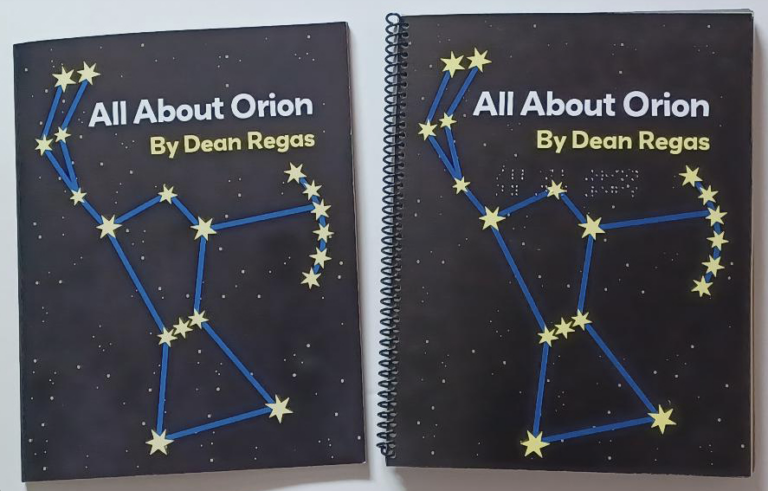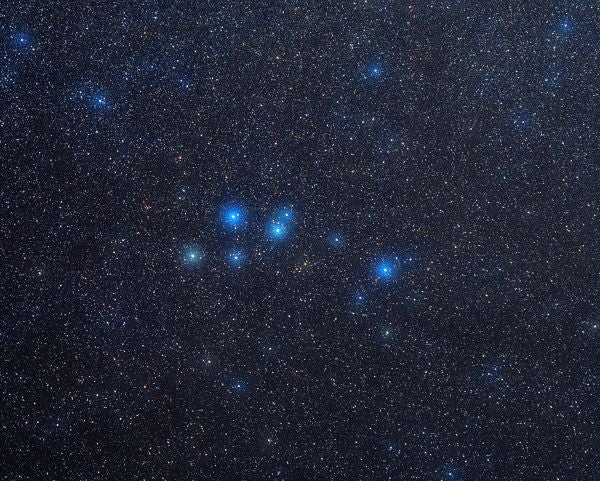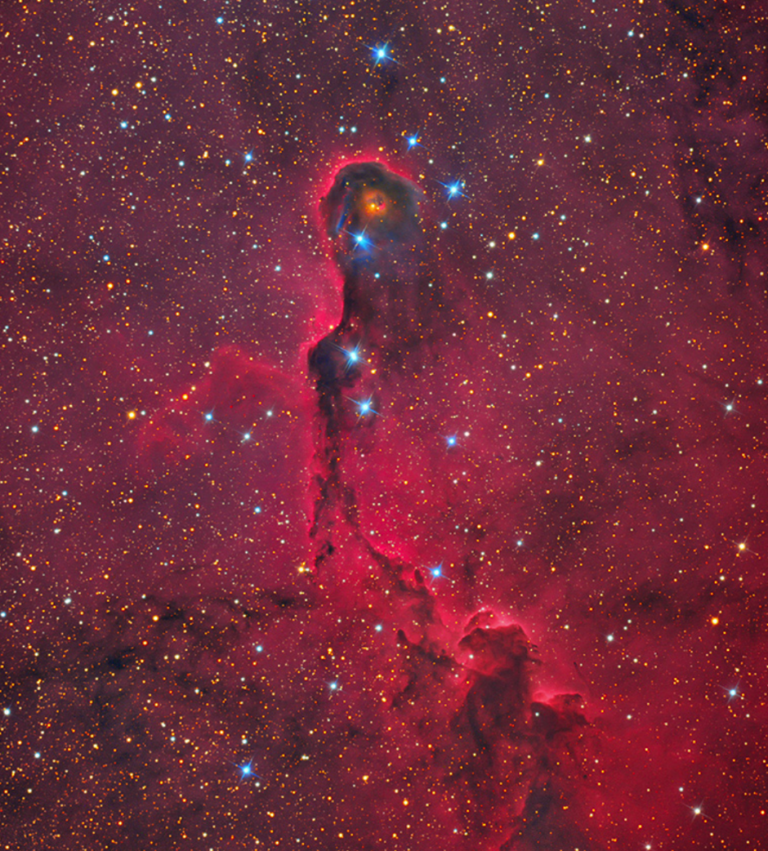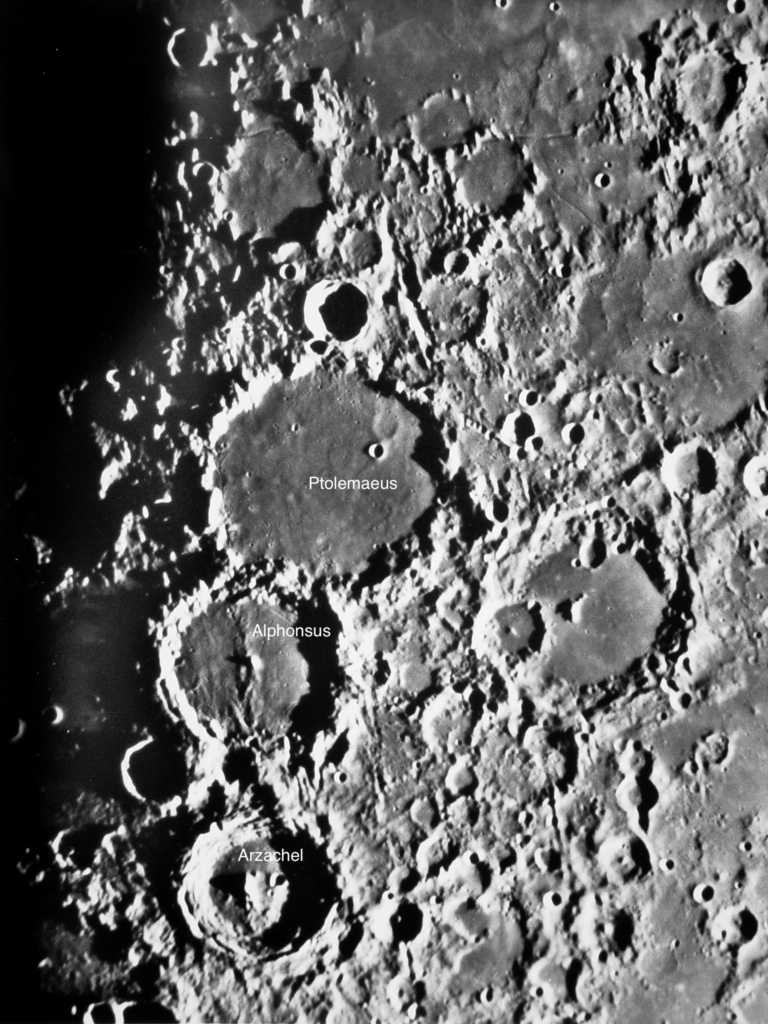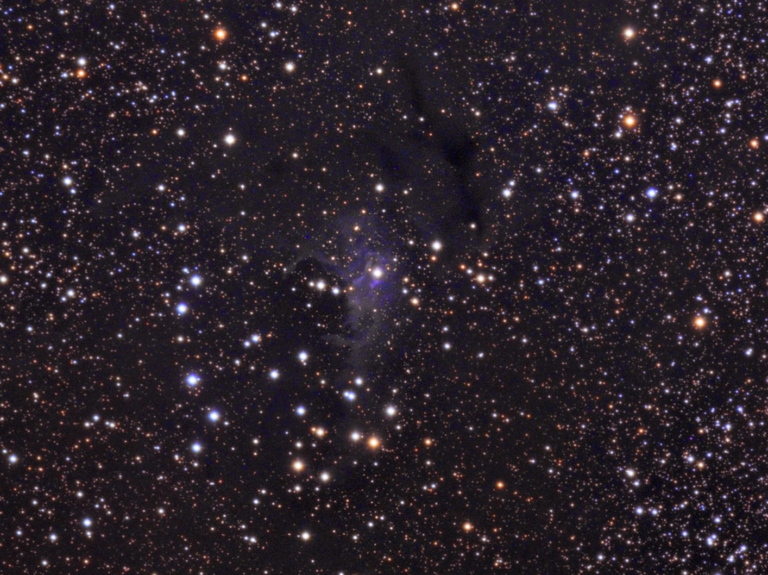Planetary nebula NGC 6781 lies in the constellation Aquila the Eagle. But while this star figure ranks 22nd in size among the 88 constellations, you won’t find any Messier objects or emission nebulae in it. In fact, although it sits squarely within the Milky Way, it contains few even reasonably bright star clusters.
NGC 6781 doesn’t make up for all that, but it is a fine target for amateurs with medium-sized telescopes. This interesting planetary lies some 3,500 light-years away and is about 2 light-years in diameter. Like all such objects, however, the bubble continues to expand and will do so until it’s too far from the central white dwarf for the star’s radiation to ionize it. At that point, it simply will fade from view.
To find NGC 6781, aim your telescope 3.8° north-northwest of magnitude 3.4 Delta (δ) Aquilae. What you’ll see is an almost perfect bubble of gas cast off by a star that once generated energy like our Sun, but which has long since stopped fusing hydrogen into helium within its core.
Through a 6-inch telescope at 100x, magnitude 11.4 NGC 6781 stands out well against the rich, star-filled background of Aquila. Through larger instruments, you’ll see that the disk doesn’t have a sharp edge and is slightly oval-shaped. If the seeing (atmospheric steadiness) at your observing site is good, you’ll notice that the central region of the nebula is darker than its surroundings.
If you’re able to observe this planetary through a 14-inch or larger scope, you’ll see lots of structure in its thick ring. At high powers, you’ll spot small, dark blotches across its face. The planetary’s central star, now a slightly bluish white dwarf, glows weakly at magnitude 16.2, so don’t spend too much time searching for it.
Make sure to explore Astronomy’s full list of 101 cosmic objects you must see. New entries will be added each week throughout 2022.

